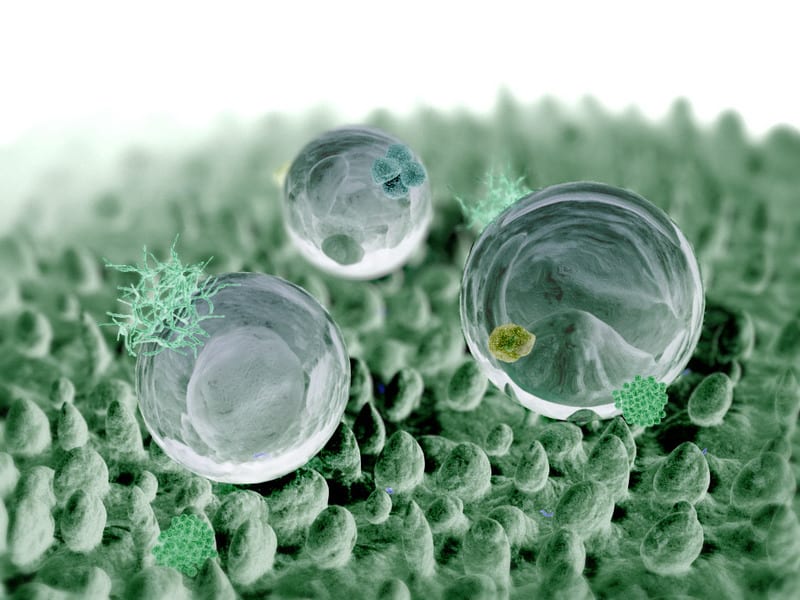Leaves of the sacred lotus are self-cleaning thanks to hydrophobic microscale bumps.
Introduction
Lotus plants (Nelumbo nucifera) stay dirt-free, an obvious advantage for an aquatic plant living in typically muddy habitats, and they do so without using detergent or expending energy. The plant’s cuticle, like that of other plants, is made up of soluble lipids embedded in a polyester matrix – wax – but the degree of its water repellency is extreme (superhydrophobic). This is accomplished through the micro-topography of their leaf surfaces, which while showing a variety of structures, all share a similar mathematical set of proportions associated with superhydrophobicity.
The Strategy
Lotus leaves, for example, exhibit extensive folding (i.e., papillose epidermal cells) and epicuticular wax crystals jutting out from the plant’s surface, resulting in a roughened microscale surface. As water and air adhere less well than water and solids, roughened surfaces tend to reduce adhesive force on water droplets, as trapped air in the interstitial spaces of the roughened surface result in a reduced liquid-to-solid contact area. This allows the self-attraction of the polar molecule of water to express more fully, causing it to form spheres.
Zoom into a Lotus Leaf
In this film see an up close look at the tiny nanostructures that give the leaf its unique behavior.
Dirt particles on the leaf’s surface stick to these droplets, both due to natural adhesion between water and solids and because contact with the leaf surface is reduced by over 95% from the leaf’s micro-topography. The slightest angle in the surface of the leaf (e.g., caused by a passing breeze) then causes the balls of water to roll off due to gravity, taking the attached dirt particles with them and cleaning the leaf without using detergent or expending energy.
The Potential
Surface finishes inspired by the self-cleaning mechanism of lotus plants and other organisms (e.g., many large-winged insects) have now been applied to paints, glass, textiles, and more, reducing the need for chemical detergents and costly labor.
















